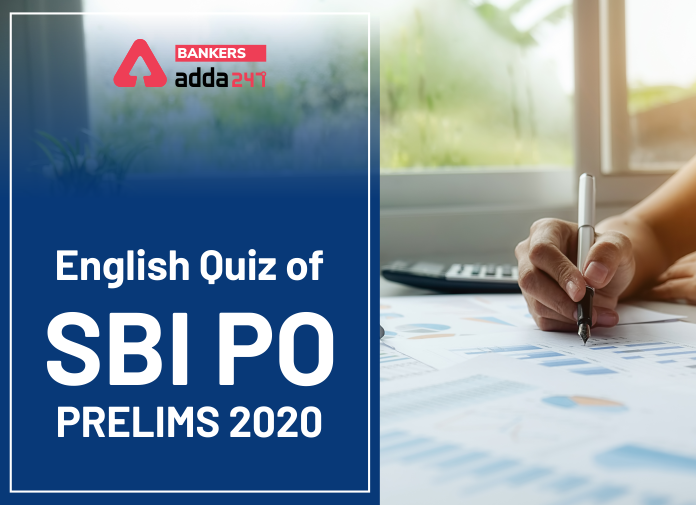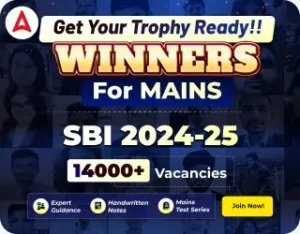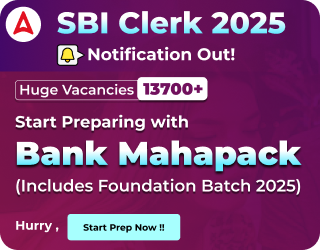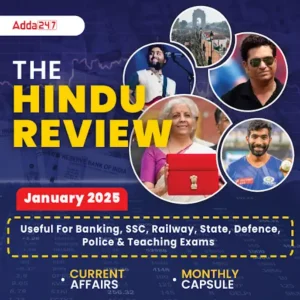Adda 247 will provide you daily English Language Mock of “SBI PO Prelims. In today’s English Language Mock, we have Reading Comprehension based Quiz. Stay tuned with bankersadda to get Daily English Language Mock and boost your preparation for the upcoming bank exam. You can also prepare with the study plan for SBI PO available on the bankersadda website.
Directions (1-8): Read the following passage and answer the following questions based on the given passage.
Union Finance Minister Nirmala Sitharaman on Wednesday announced a ₹3 lakh crore collateral free loan scheme for businesses, especially micro, small and medium enterprises (MSMEs), as part of a ₹20-lakh-crore economic stimulus package to deal with the COVID-19 pandemic.
For salaried workers and taxpayers, some relief was provided in the form of an extended deadline for income tax returns for financial year 2019-20, with the due date now pushed to November 30, 2020. The rates of tax deduction at source (TDS) and tax collection at source (TCS) have been cut by 25% for the next year, while statutory provident fund (PF) payments have been reduced from 12% to 10% for both employers and employees for the next three months.
Apart from MSMEs, other stressed business sectors which got attention were non-banking finance companies (NBFCs), power distribution companies, contractors and the real estate industry. This is the first tranche of the Atmanirbhar Bharat Abhiyan announced by Prime Minister Narendra Modi on Tuesday as a ₹20 lakh crore economic package. That package includes the ongoing Pradhan Mantri Garib Kalyan Yojana, meant to support the poorest and most vulnerable communities during the pandemic, as well as several measures taken by the Reserve Bank of India to improve liquidity. More tranches are expected in the next few days.
Ms. Sitharaman side-stepped queries on the actual cash outgo for the government, as well as how the Centre intends to raise the needed funds. Ernst and Young’s chief policy advisor D.K. Srivastava estimated that the measures announced on Wednesday amounted to ₹5.94 lakh crore, which include both liquidity financing measures and credit guarantees, although the direct fiscal cost to the government in the current financial year may only be ₹16,500 crore.
MSMEs will get the bulk of the funding. The ₹3 lakh crore emergency credit line will ensure that 45 lakh units will have access to working capital to resume business activity and safeguard jobs, Ms. Sitharaman said. For two lakh MSMEs which are stressed or considered non-performing assets, the Centre will facilitate provision of ₹20,000 crore as subordinate debt. A ₹50,000 crore equity infusion is also planned, through an MSME fund of funds with a corpus of ₹10,000 crore.
The definition of an MSME is being expanded to allow for higher investment limits and the introduction of turnover-based criteria. In a bid to fulfil the Prime Minister’s vision of a self-reliant or “atmanirbhar” India, global tenders will not be allowed for government procurement up to ₹200 crore. NBFCs, housing finance companies and microfinance institutions — many of which serve the MSME sector — will be supported through a ₹30,000 crore investment scheme fully guaranteed by the Centre, and an expanded partial credit guarantee scheme worth ₹45,000 crore, of which the first 20% of losses will be borne by the Centre.
Power distribution companies, which are facing an unprecedented cash flow crisis, will receive a ₹90,000 crore liquidity injection. Contractors will get a six-month extension from all Central agencies, and also get partial bank guarantees to ease their cash flows. Registered real estate projects will get a six-month extension, with COVID-19 to be treated
as a “force majeure” event.
“A clear feature of today’s announcement is that most of these are basically supply-side measures, aimed at activating businesses in the MSME, real estate, NBFC sectors,” said Dr. Srivastava, who is also a member of the Advisory Council to the 15th Finance Commission. “Generally, stimulus measures are aimed at boosting demand either by government spending on its own account or increasing disposable incomes of households through cash transfers or tax concessions.” However, he noted that both demand and supply are in need of revival in the Indian economy today.
“What was announced today is not a stimulus package. It is in effect a survival package, so that MSMEs can survive the lockdown and restart production,” said fellow economist and former Chief Statistician of India Pronab Sen, welcoming the measures but adding that a further stimulus may be needed after the lockdown is lifted. He expressed concern that risk-averse bankers may not extend the loan benefits to all MSMEs despite the government’s 100% credit guarantee. “Some pick and choose is going to happen now, and some of those who need it and deserve may not get it. It would have been better if the government had made it mandatory across the board,” he said.
Q1. What kind of relief was given to salaried workers and taxpayers?
(a) Extension of ITR for 19-20 to 30th November 2020
(b) Reduction in TDS and TCS by 25%
(c) Reduction in PF from 12 to 10 % for the next three months
(d) Only (a)
(e) All of the above
Q2. Which of the following sectors were getting attention other than MSMEs?
(i) NBFCs
(ii) Power Distribution Companies
(iii) Telecom Sector
(iv) Contractors
(v) Real-estate sector
(a) (i), (ii), (iii), and (iv)
(b) (i), (ii), (iv), and (v)
(c) (i), (iv), (v), and (iii)
(d) (i), (iii), (iv), and (v)
(e) None of these
Q3. What the economic package includes as announced by PM?
(a) Pradhan Mantri Garib Kalyan Yojna for uplifting poor and vulnerable communities
(b) Measures and steps taken by RBI for improving liquidity
(c) Both (a) and (b)
(d) Inclusions of measures to deal with the economic crisis
(e) Detailed information about upcoming tranches
Q4. What does the phrase side-stepped means as given in the passage?
(a) avoid (someone or something) by stepping sideways.
(b) a step taken sideways, typically to avoid someone or something.
(c) climb or descend by lifting alternate skis while facing sideways on the slope.
(d) avoid dealing with or discussing (something problematic or disagreeable).
(e) None of these
Q5. What were the provisions for MSMEs in the economic package?
(a) Rs. 3 Lakh crore for ensuring the access of 45 Lakh units to resume business activities as well as safeguard jobs
(b) Rs. 20,000 crore as subordinate debt for NPA or stressed MSMEs
(c) A Rs. 30,000 crore equity infusion
(d) Both (a) and (b)
(e) Both (b)and (c)
Q6. How the NBFCs, Housing finance and microfinance are supported by the package?
(a) A Rs. 30, 000 crore investment scheme entirely guaranteed by the Centre
(b) An expanded partial credit guarantee scheme worth Rs. 45,000 crore
(c) Expanding definition of an MSME
(d) Both (a) and (b)
(e) None of these
Q7. What is generally the primary aim of stimulus measures?
(a) Boosting demand either by government spending on its own account
(b) Increasing disposable incomes of households via cash transfers or concession in tax
(c) Aiming at reviving demand and supply
(d) Both (b) and (c)
(e) Both (a) and (b)
Q8. Why is the stimulus package termed as a survival package?
(a) The package allows survival of the poor category population
(b) MSMEs can survive the lockdown period and resume production
(c) MSMEs will be able to survive amid losing workforce
(d) The package lets the government survive the time of crisis
(e) None of these
To attempt the complete quiz refer to the links given below:
| 20 May | Click to Attempt Now on Web | Click to Attempt Now on App | Download PDF |
Practice with Crash Course and Online Test Series for SBI PO Prelims:
- BATCH | BILINGUAL | LIVE CLASS
- SBI PO Prime 2020 Online Test Series
- SBI PO KA MAHA PACK (Online Live Classes, Test Series, Video Courses, Ebooks in English Medium)
Register here to get study materials and regular updates!!



 English Language Quiz For Bank Foundatio...
English Language Quiz For Bank Foundatio...
 English Language Quiz For SBI Clerk Prel...
English Language Quiz For SBI Clerk Prel...
 English Language Quiz For SBI Clerk Prel...
English Language Quiz For SBI Clerk Prel...





